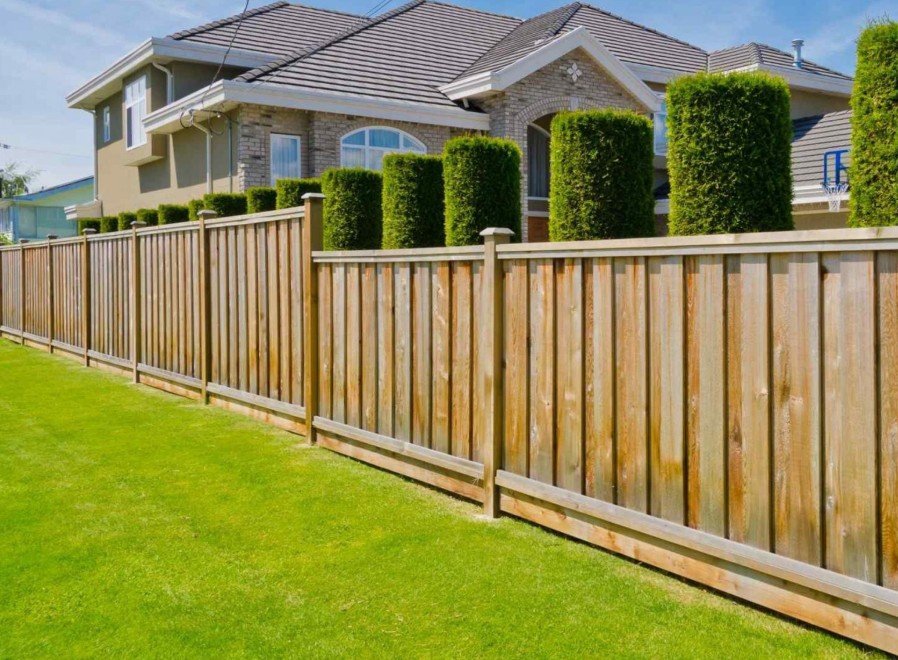
Is Wood Fencing a Good Investment for Homeowners?
When homeowners consider improving their property’s privacy, security, and curb appeal, wood fencing often emerges as a top choice. But is it truly a good investment? With various fencing materials available—vinyl, aluminum, chain-link, and composite—wood remains a classic option. This article explores the benefits, drawbacks, and long-term value of wood fencing to help homeowners make an informed decision.
The Benefits of Wood Fencing
- Aesthetic Appeal
One of the biggest advantages of wood fencing is its natural beauty. Wood offers a timeless, rustic charm that complements different architectural styles, from traditional to modern. Homeowners can choose from various wood types, such as cedar, redwood, pine, or pressure-treated lumber, each offering unique grain patterns and colors. Additionally, wood can be stained or painted to match the home’s exterior, enhancing curb appeal.
- Privacy and Security
A well-built wood fence provides excellent privacy, blocking views from neighbors and passersby. Unlike chain-link or wrought iron fences, wood panels create a solid barrier, reducing noise and creating a secluded outdoor space. This makes it ideal for families with children or pets who need a secure yard.
- Customization Options
Wood is highly versatile, allowing homeowners to customize fence height, design, and finish. Popular styles include:
- Picket fences(for a classic look)
- Shadowbox fences(for semi-privacy with airflow)
- Board-on-board fences(for full privacy)
- Split rail fences(for a rustic, open feel)
This flexibility ensures homeowners can find a design that fits their needs and preferences.
- Cost-Effective Compared to Other Materials
While wood fencing isn’t the cheapest option (chain-link is more affordable), it is often less expensive than vinyl, wrought iron, or composite fencing. Pressure-treated pine is budget-friendly, while cedar and redwood offer greater durability at a higher cost. For homeowners seeking a balance between cost and aesthetics, wood is a practical choice.
- Eco-Friendly Option
Wood is a renewable resource, especially when sourced from sustainably managed forests. Unlike vinyl or metal fencing, wood is biodegradable and has a lower carbon footprint. Homeowners who prioritize sustainability may prefer wood fencing over synthetic alternatives.
The Drawbacks of Wood Fencing
- Requires Regular Maintenance
Unlike vinyl or metal fences, wood is susceptible to weathering, rot, and insect damage. To prolong its lifespan, homeowners must:
- Apply sealant or stain every 2-3 years
- Inspect for termites and wood-boring insects
- Repair or replace damaged boards
Neglecting maintenance can lead to warping, splintering, and premature deterioration.
- Shorter Lifespan Than Synthetic Materials
A well-maintained wood fence can last 15-20 years, while cedar and redwood may last longer. However, vinyl and metal fences often last 30+ years with minimal upkeep. Homeowners who want a long-term, low-maintenance solution might find wood less ideal.
- Vulnerability to Weather Conditions
Wood expands and contracts with temperature changes, which can cause warping or cracking over time. In humid climates, moisture can lead to mold and mildew, while excessive sun exposure may cause fading. Proper treatment and weather-resistant wood types can mitigate these issues but won’t eliminate them entirely.
Is Wood Fencing Worth the Investment?
For homeowners who value natural beauty, customization, and affordability, wood fencing is a solid investment. It enhances property value by improving aesthetics, privacy, and security. According to real estate experts, a well-maintained fence can increase a home’s resale value by appealing to potential buyers.
However, those who prefer a low-maintenance option may find vinyl or aluminum fencing more suitable. The key to maximizing wood fencing’s value is proper installation and ongoing care.
Tips for Maintaining Wood Fencing
- Choose durable wood types(cedar and redwood resist rot and insects better than pine).
- Apply a high-quality sealantto protect against moisture and UV damage.
- Inspect annuallyfor signs of damage and address issues promptly.
- Keep plants and debris awayfrom the fence to prevent moisture retention.
Final Verdict: Wood Fencing Is a Smart Choice for Many Homeowners
While wood fencing requires maintenance, its benefits—affordability, customization, and natural appeal—make it a worthwhile investment for many homeowners. By selecting high-quality materials and committing to upkeep, a wood fence can provide years of beauty and functionality.